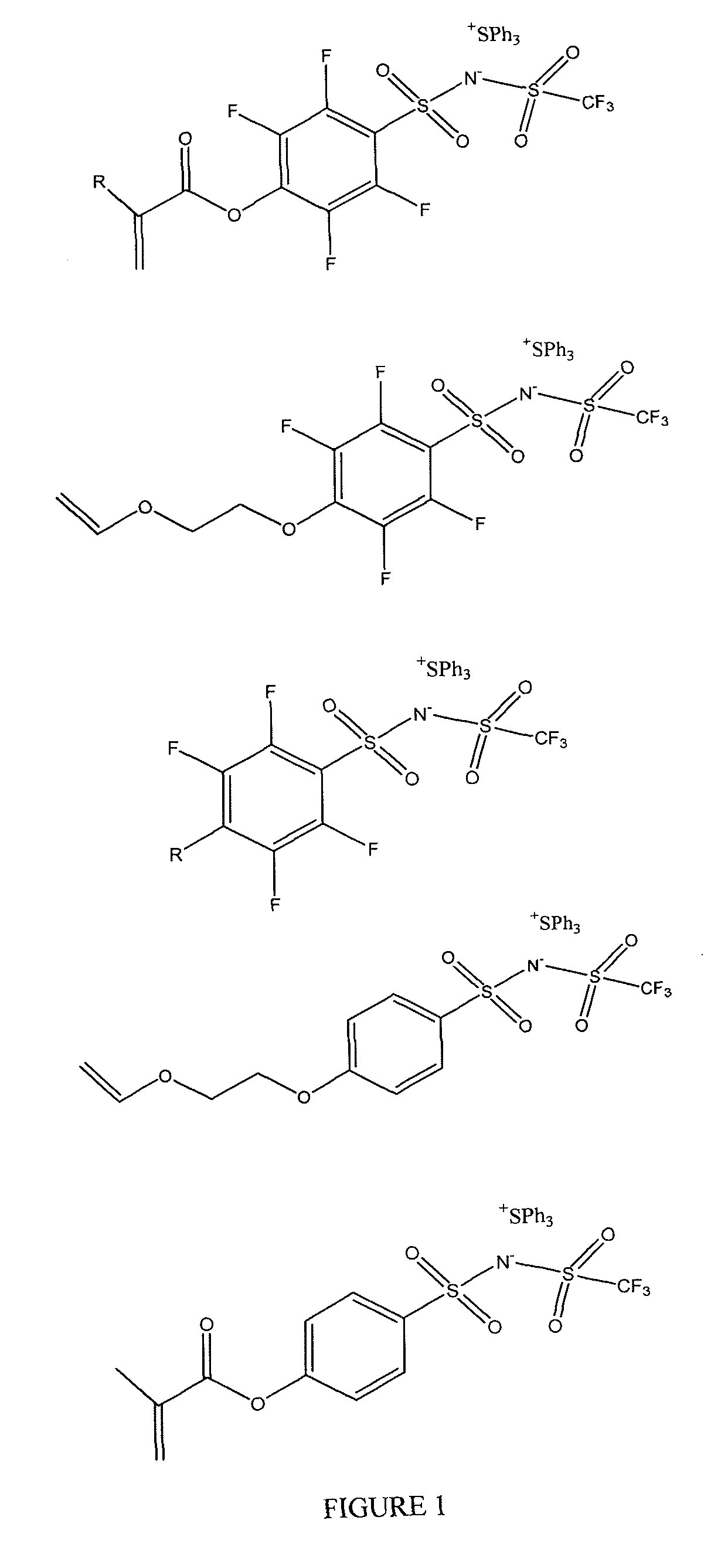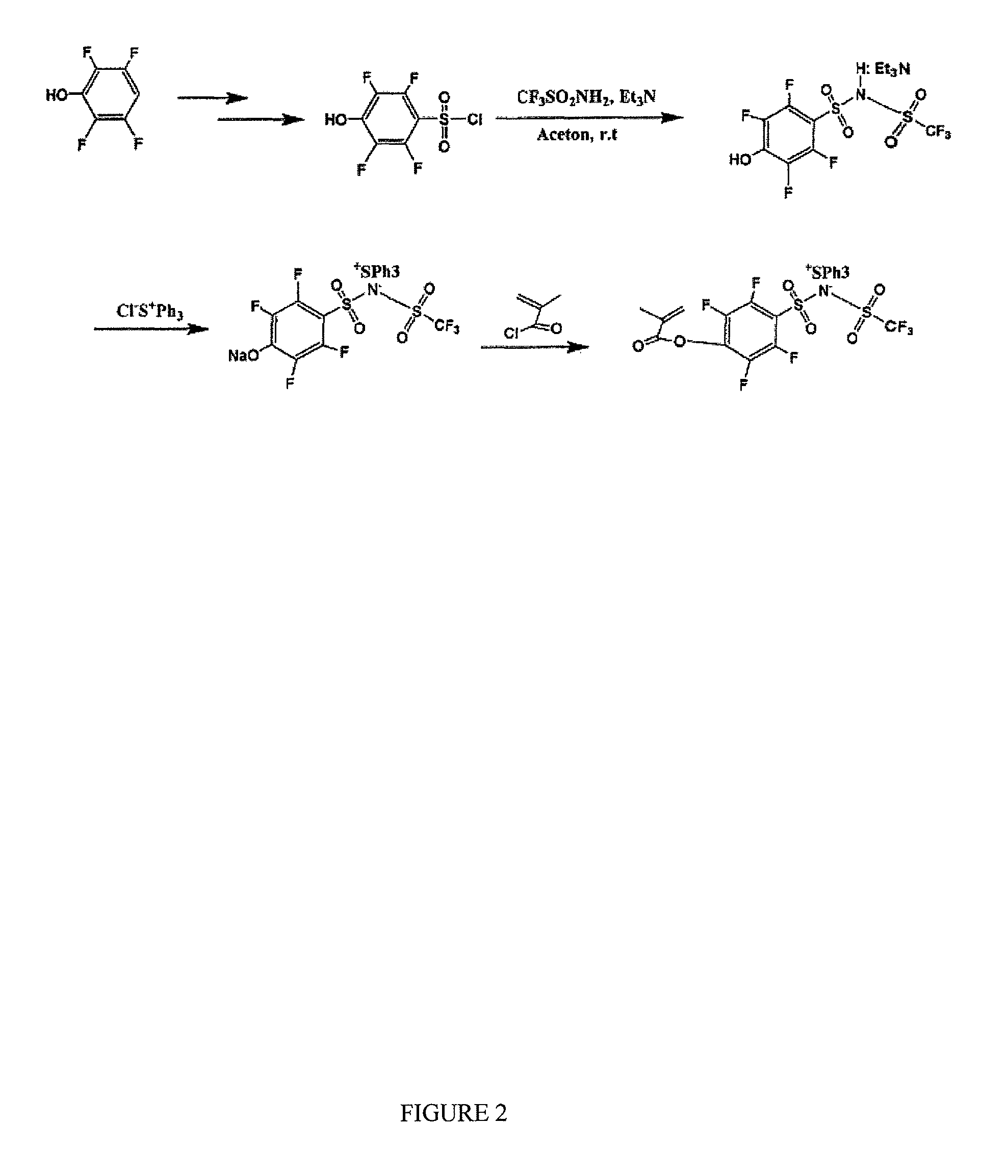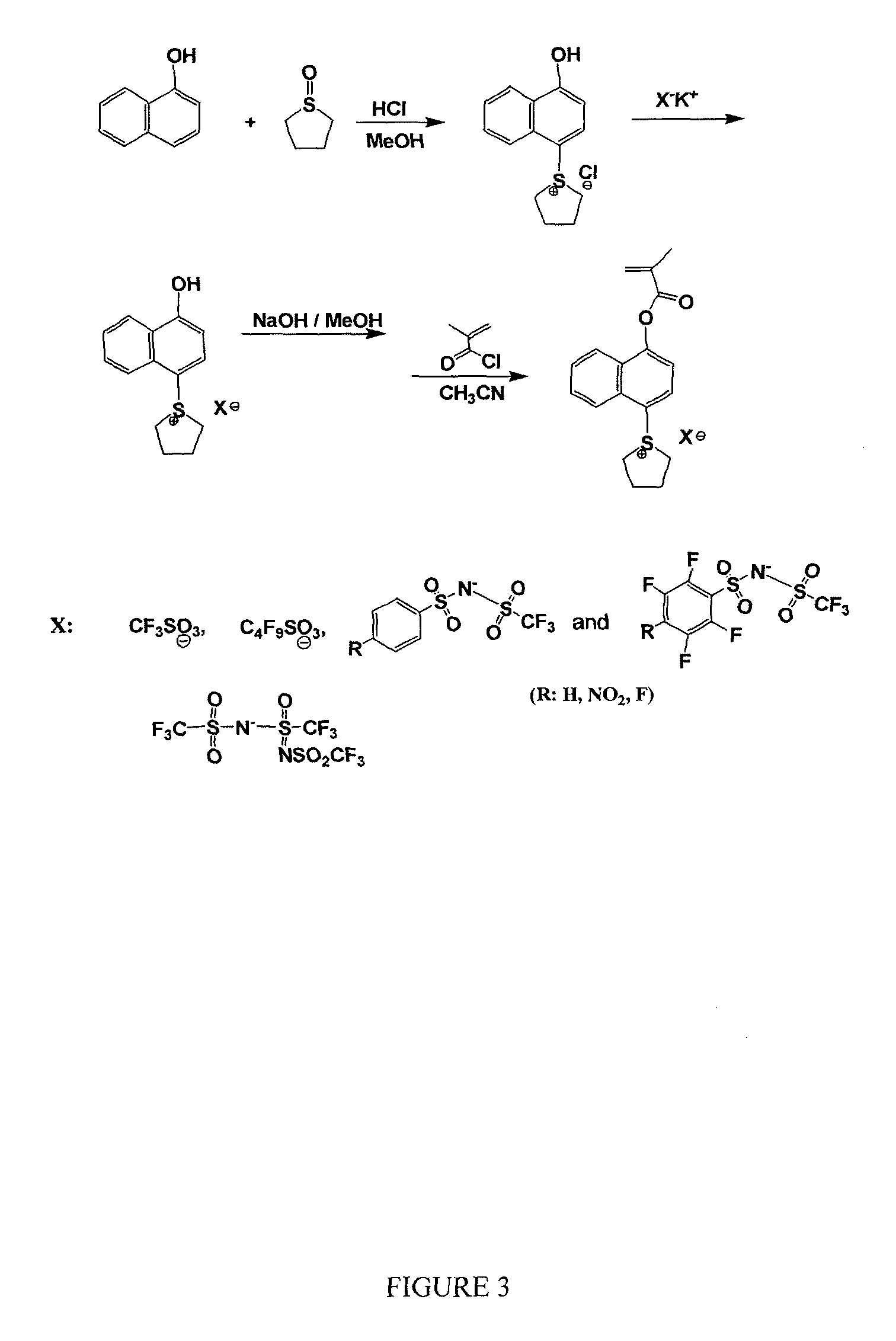Photoacid generators and lithographic resists comprising the same
a technology of photoacid generators and lithographic resists, which is applied in the direction of photosensitive materials, instruments, photomechanical equipment, etc., can solve the problems of phase separation, small molecule pags typically exhibit limited compatibility with resist polymer matrix, and the development of advanced photoresist materials with all the required imaging properties remains challenging, etc., to achieve high sensitivity, high contrast, and high resolution
- Summary
- Abstract
- Description
- Claims
- Application Information
AI Technical Summary
Benefits of technology
Problems solved by technology
Method used
Image
Examples
example 1
Synthesis of a Photoacid Generator of Formula (I)
[0110]4-Nitrobenzenesulfonyl chloride (1, 0.01 mol) was slowly added dropwise via addition funnel to a solution of triethylamine (0.03 mol) and trifluomethanesulfonamide (2, 0.011 mol) in 25 mL freshly distillated acetone, and the solution stirred at room temperature for 48 hours. The resulting mixture was concentrated via reduced pressure rotary evaporation. To the residue was added 25 mL 1.0 M HCl and the solution extracted with methylene chloride three times. The organic extracts were combined, dried over anhydrous sodium sulfate, and solvent were removed via reduced pressure rotary evaporation followed by further drying for 72 hours at vacuum to give product yielding 92% of brown wax which was characterized as the triethylammonium salt (3).
[0111]This salt was next reacted with 50% aqueous solution of triphenylsulfonium chloride (0.012 mol) in acetonenitrile, at room temperature overnight. The resulting mixture was concentrated via...
example 2
Synthesis of a Photoacid Generator of Formula (I)
[0112]4-Methoxybenzenesulfonyl chloride (1, 0.01 mol) was slowly added dropwise via addition funnel to a solution of triethylamine (0.03 mol) and trifluomethanesulfonamide (2, 0.011 mol) in 25 mL freshly distillated acetone, and the solution stirred at room temperature for 48 hours. The resulting mixture was concentrated via reduced pressure rotary evaporation. To the residue was added 25 mL 1.0 M HCl and the solution extracted with methylene chloride three times. The organic extracts were combined, dried over anhydrous sodium sulfate, and solvent were removed via reduced pressure rotary evaporation followed by further drying for 72 hours at vacuum to give product yielding 92% of brown oil which was characterized as the triethylammonium salt (3). This salt was next dissolved in 80 mL DMF and sodium ethanethiolate (0.025 mol) added. The reaction was keep reflux for 4 hours, and then the bulk DMF was removed via vacuum distillation. The...
example 3
Synthesis of a Photoacid Generator of Formula (II)
[0114]The following synthesis of a photoacid generator of Formula (II) is further illustrated in FIG. 21.
Synthesis of naphthalen-1-yl methacrylate (3)
[0115]An oven dried 250 mL 2 neck round bottom flask fitted with a dropping funnel and guard tube under inert atmosphere was charged with 100 mL of dry dichloromethane, 1-naphthol (1) (5.0 g, 34.6 mmol) and triethyl amine (7.0 g, 70.0 mmol). The flask was cooled to −5° C. (ice & water bath), methacryloyl chloride (2) (5.4 g, 52.0 mmol) was added slowly over a period of 15 min at −5° C. The reaction was stirred for 2 h at −5° C. and allow to warm to room temperature and stirred for another 2 h at room temperature. Reaction was monitored by TLC (until naphthol was absent). Reaction mixture was poured into a 500 mL separating funnel and the organic layer was washed with water and aq. Na2CO3 The organic layer were again washed with water and dried over anhydrous Na2SO4. DCM was removed unde...
PUM
| Property | Measurement | Unit |
|---|---|---|
| feature sizes | aaaaa | aaaaa |
| temperature | aaaaa | aaaaa |
| temperature | aaaaa | aaaaa |
Abstract
Description
Claims
Application Information
 Login to View More
Login to View More - R&D
- Intellectual Property
- Life Sciences
- Materials
- Tech Scout
- Unparalleled Data Quality
- Higher Quality Content
- 60% Fewer Hallucinations
Browse by: Latest US Patents, China's latest patents, Technical Efficacy Thesaurus, Application Domain, Technology Topic, Popular Technical Reports.
© 2025 PatSnap. All rights reserved.Legal|Privacy policy|Modern Slavery Act Transparency Statement|Sitemap|About US| Contact US: help@patsnap.com



